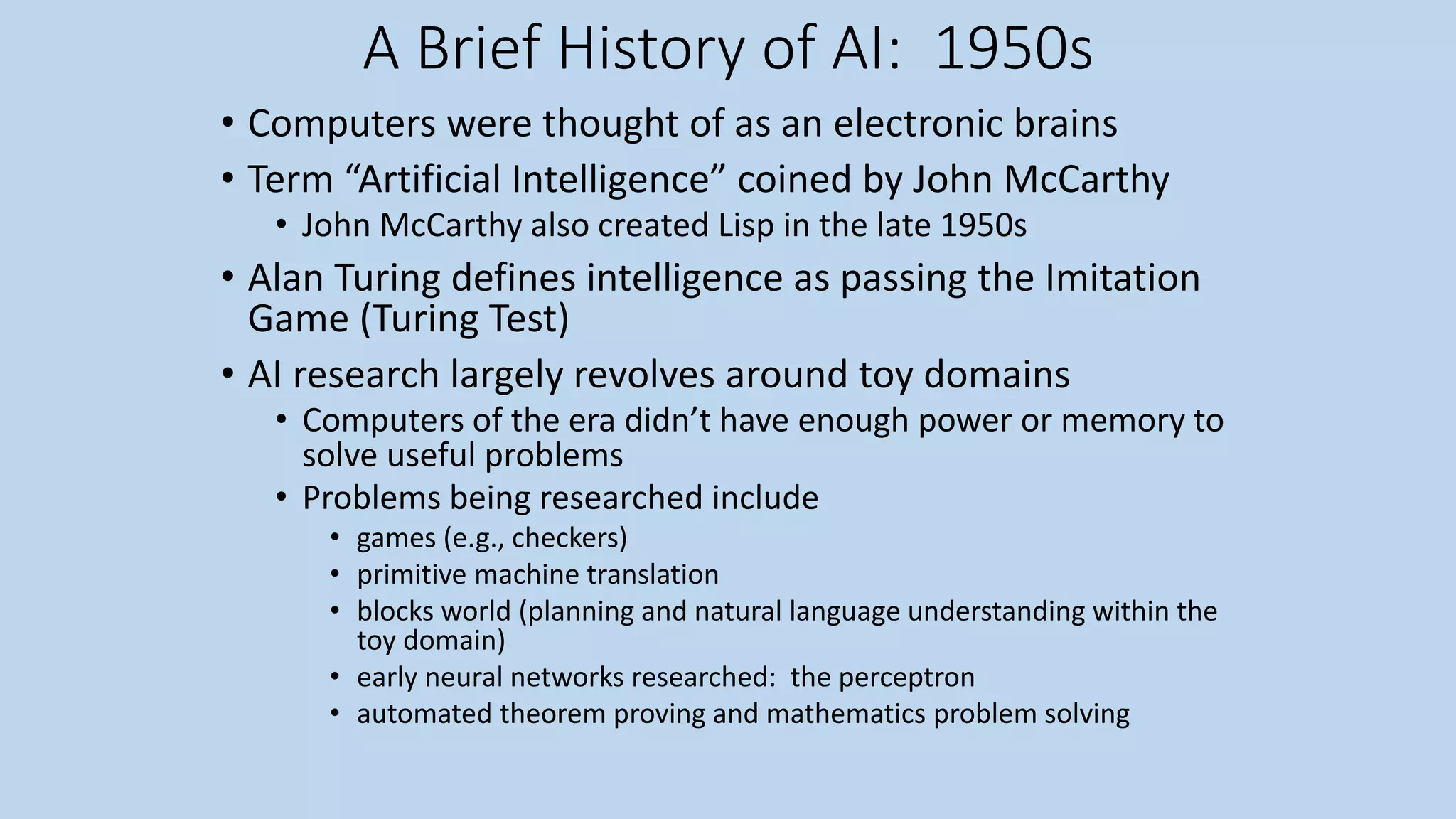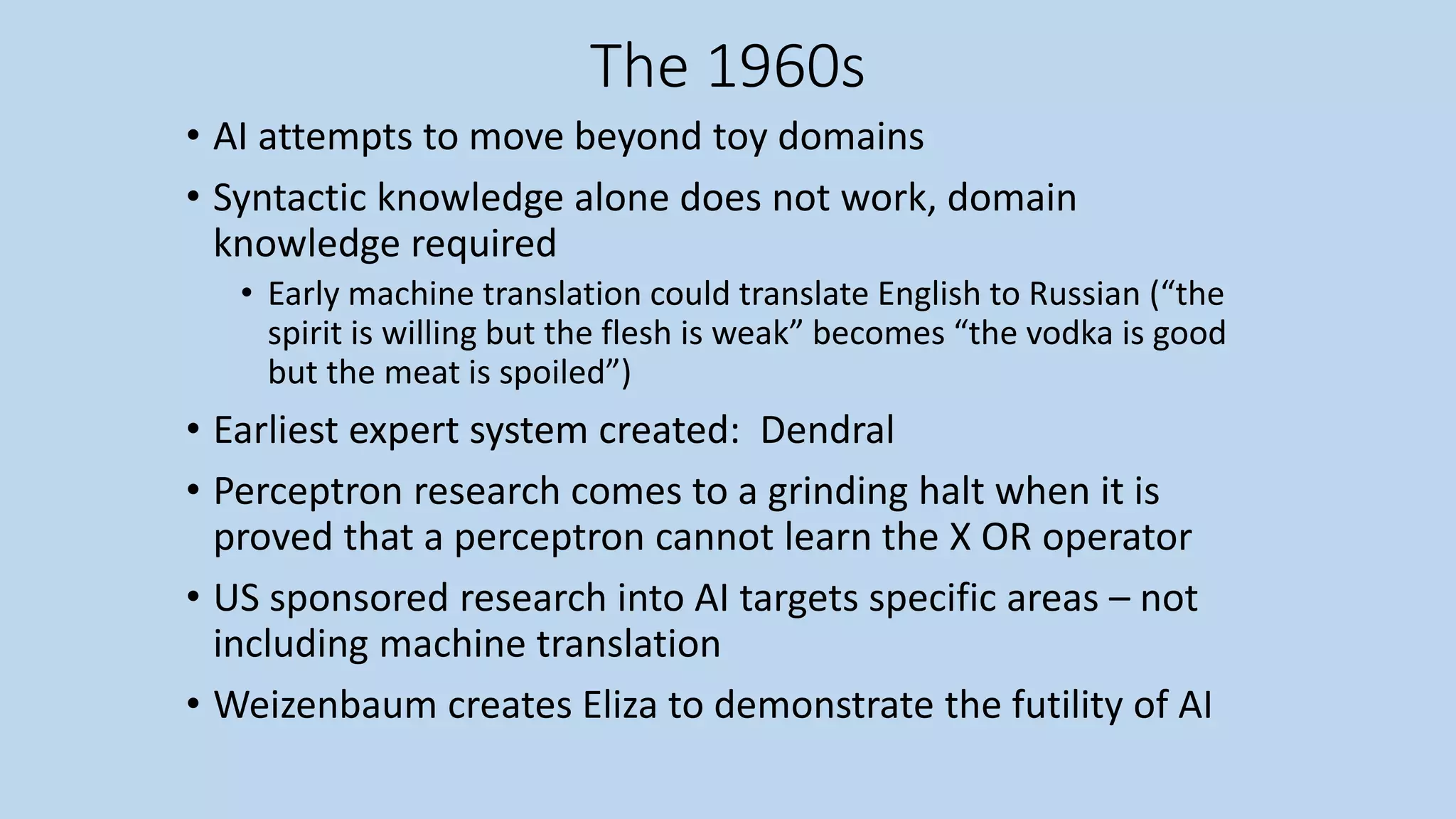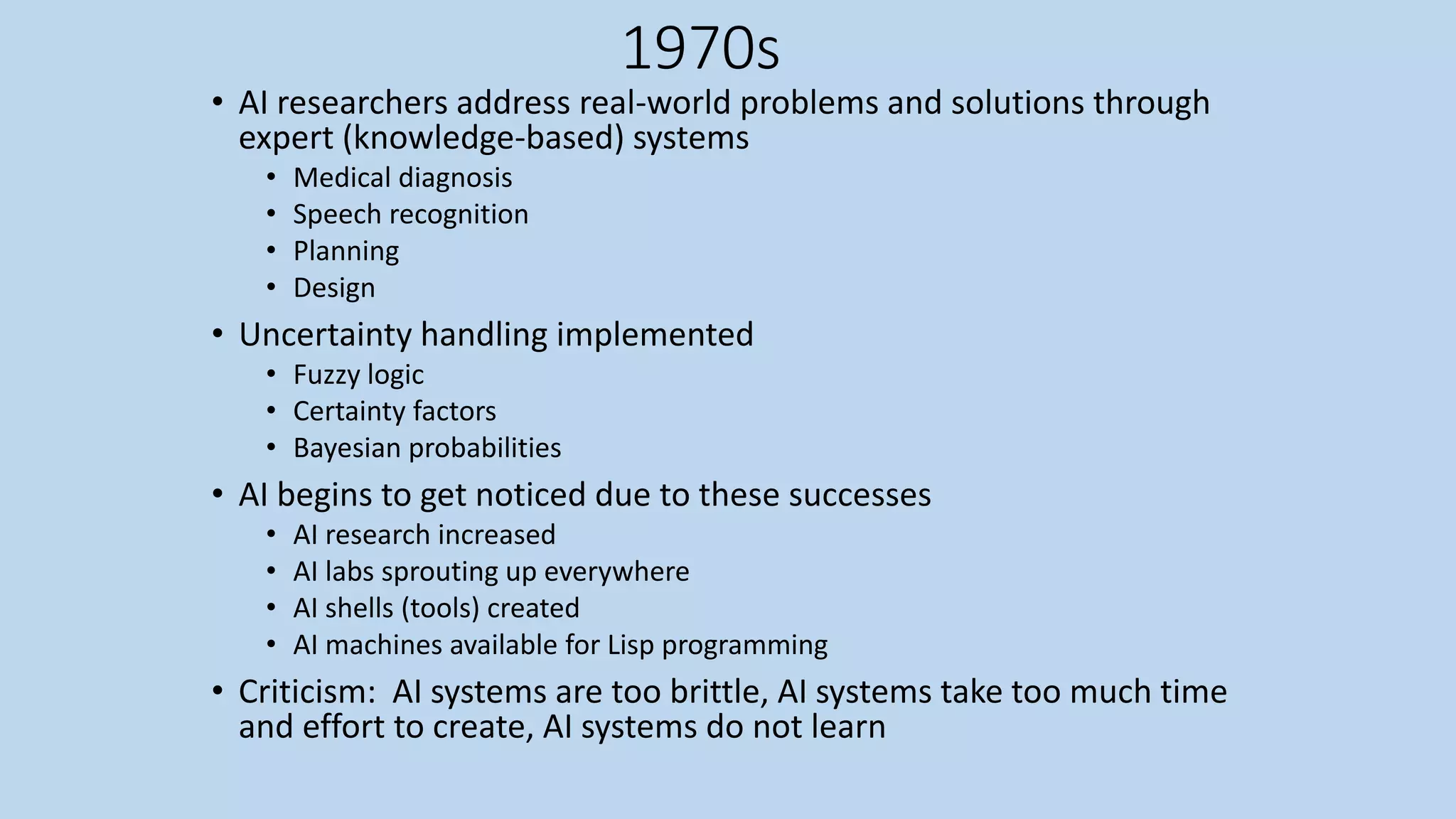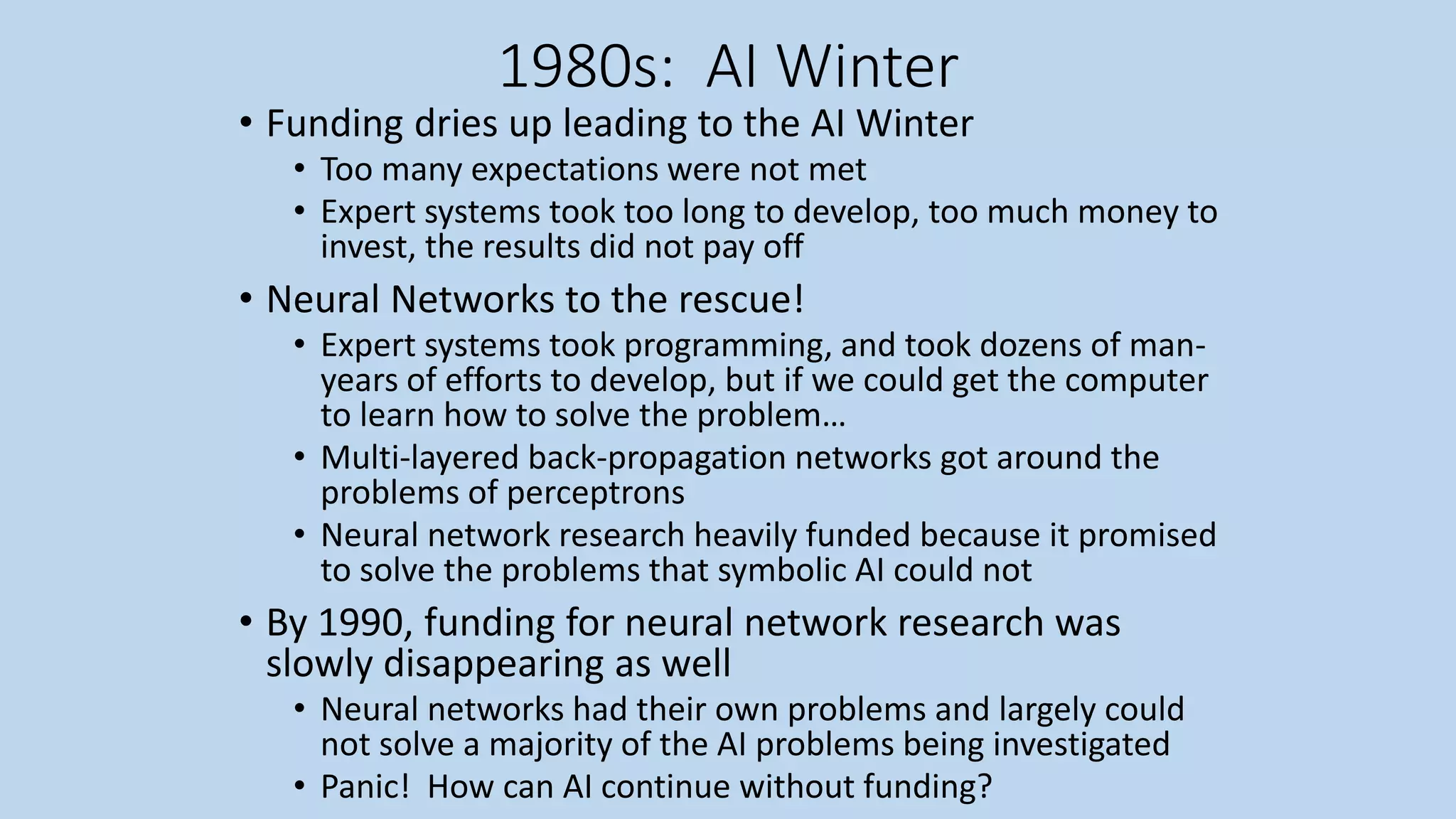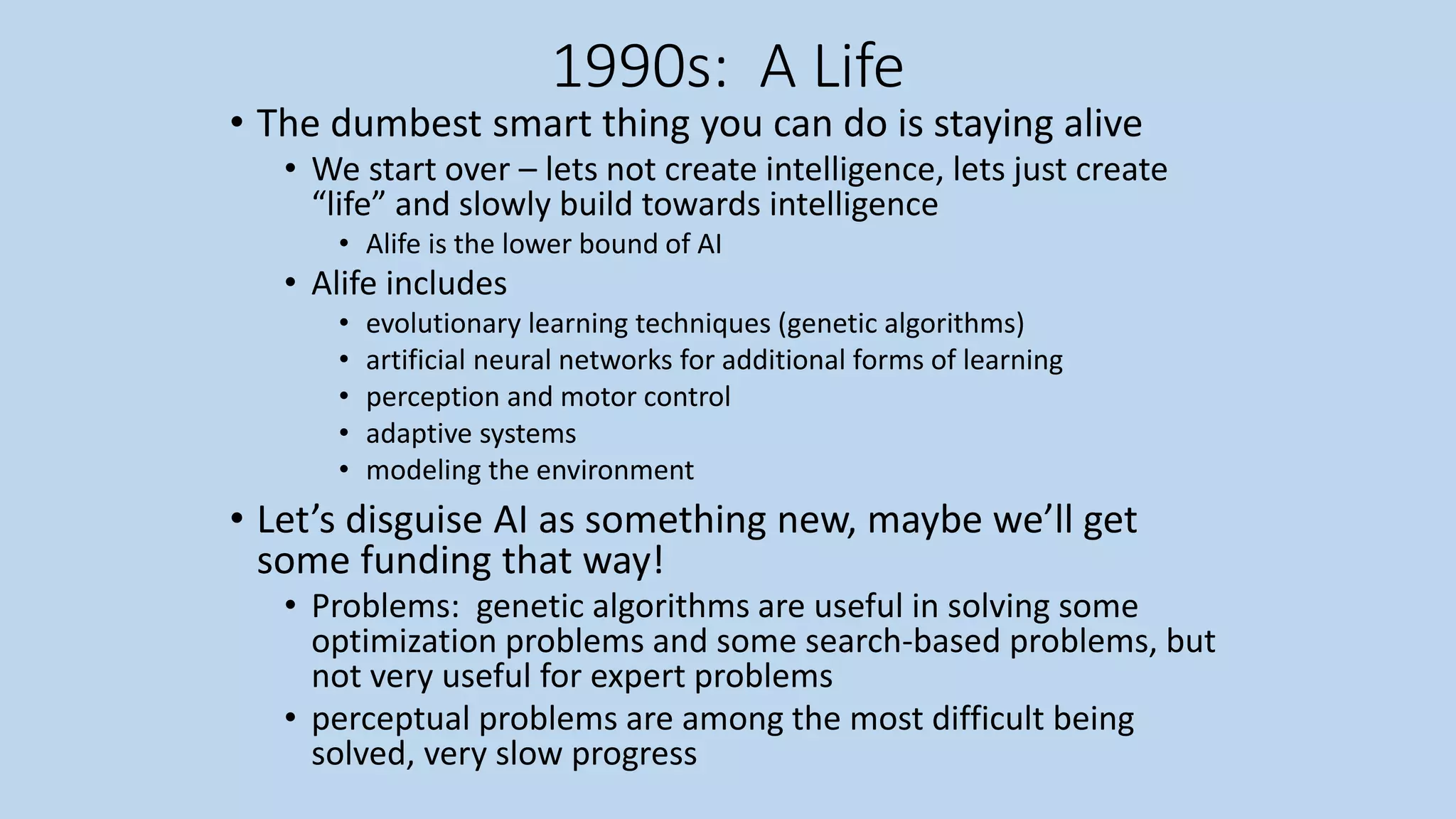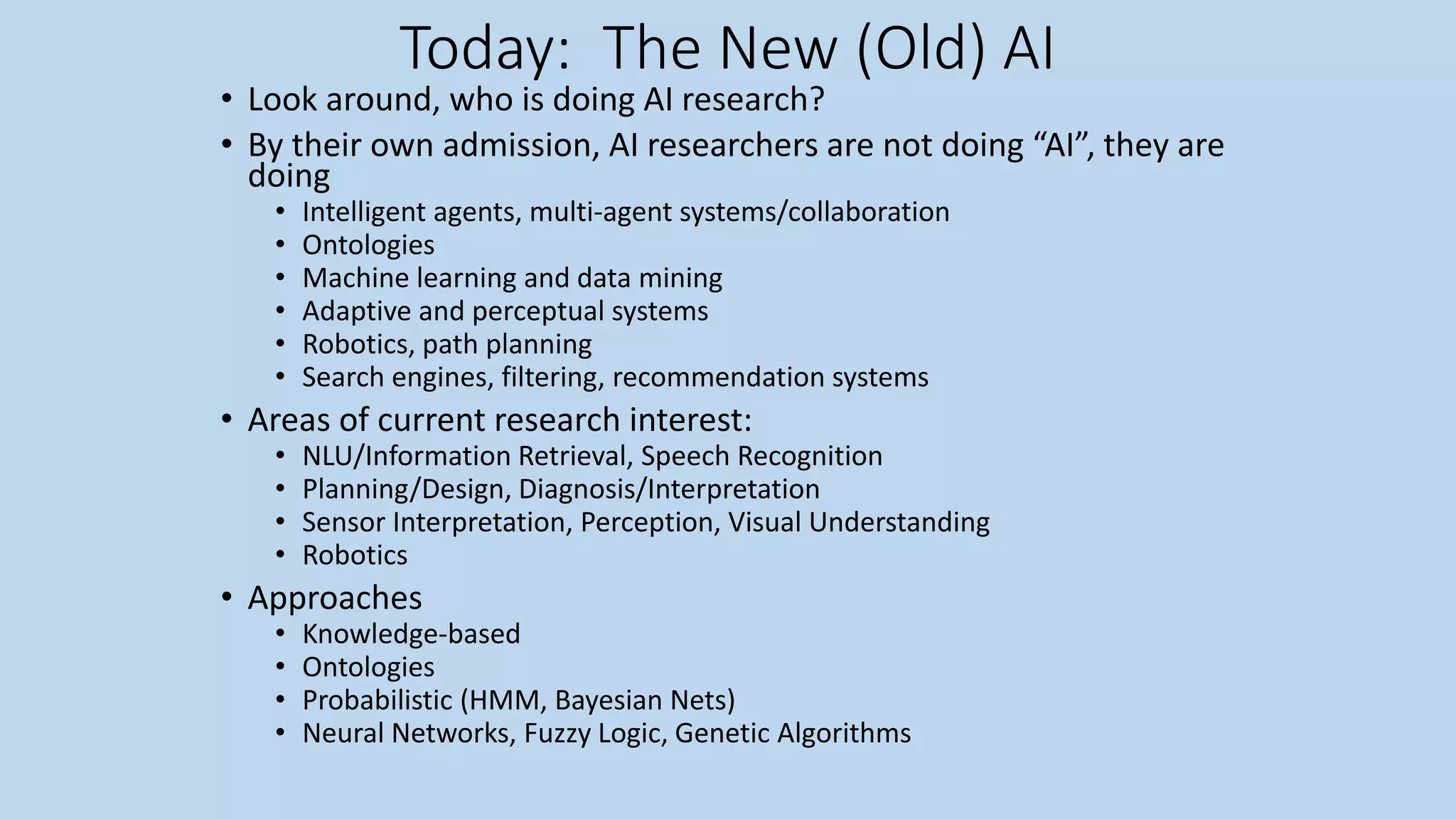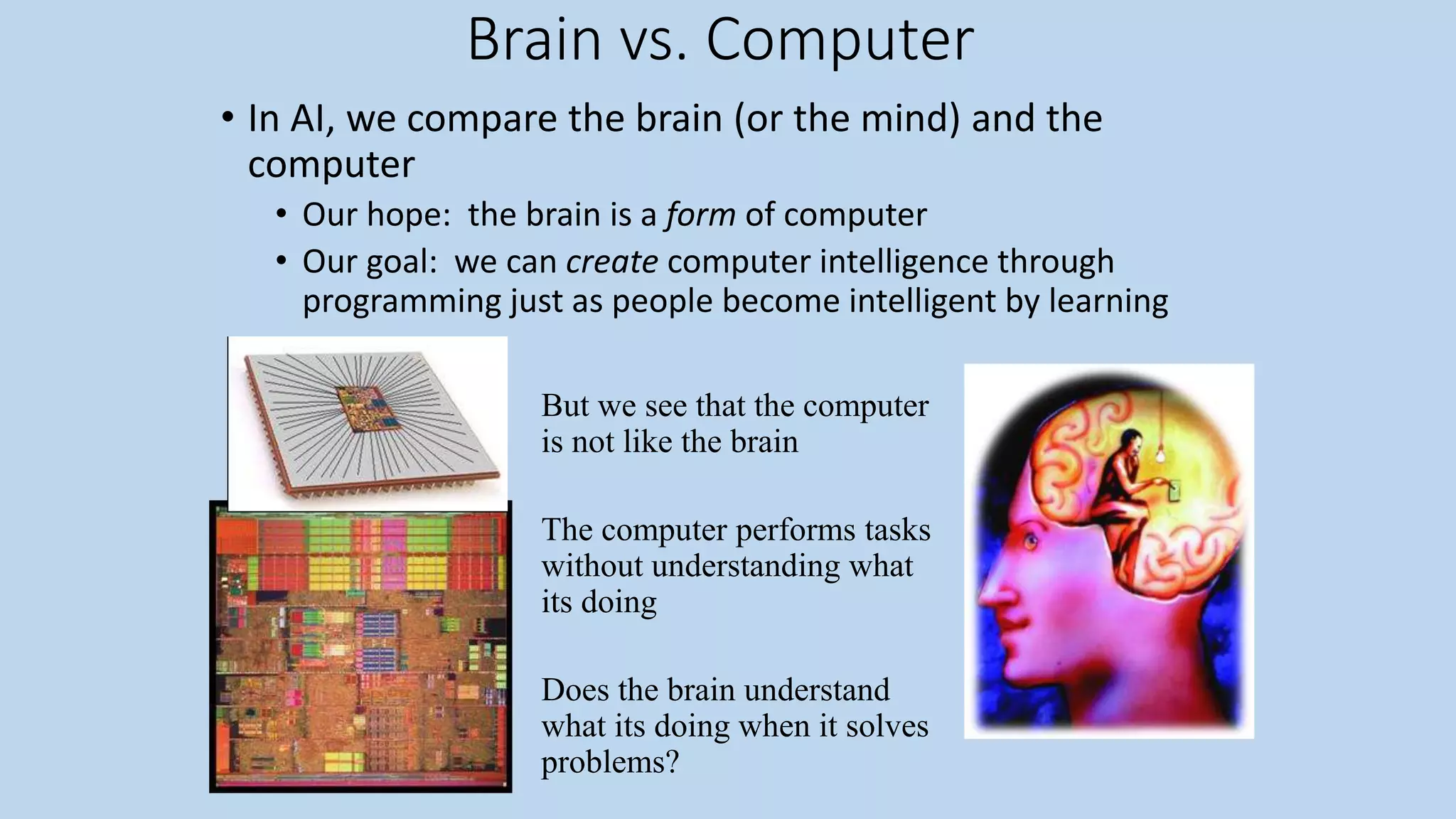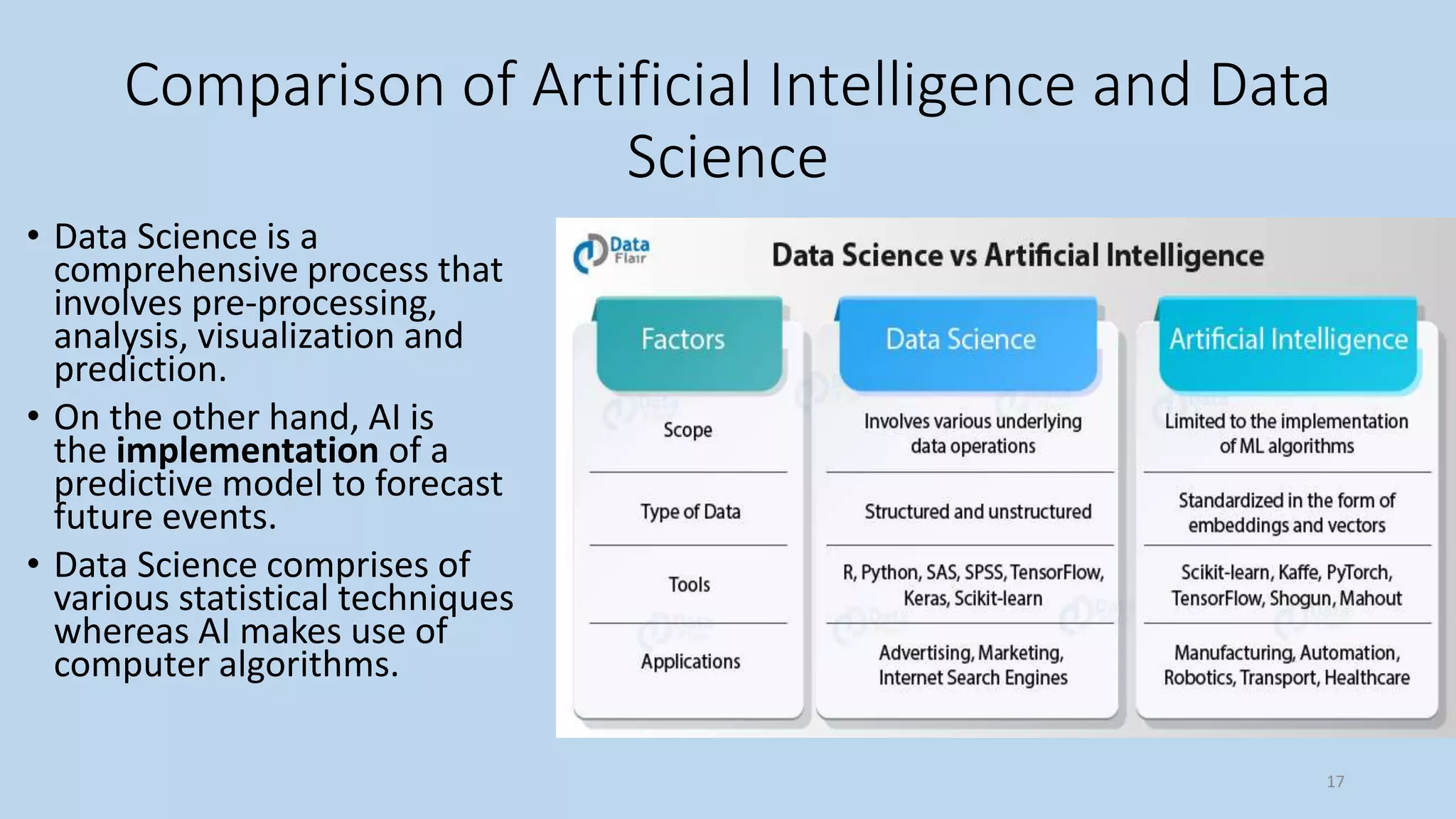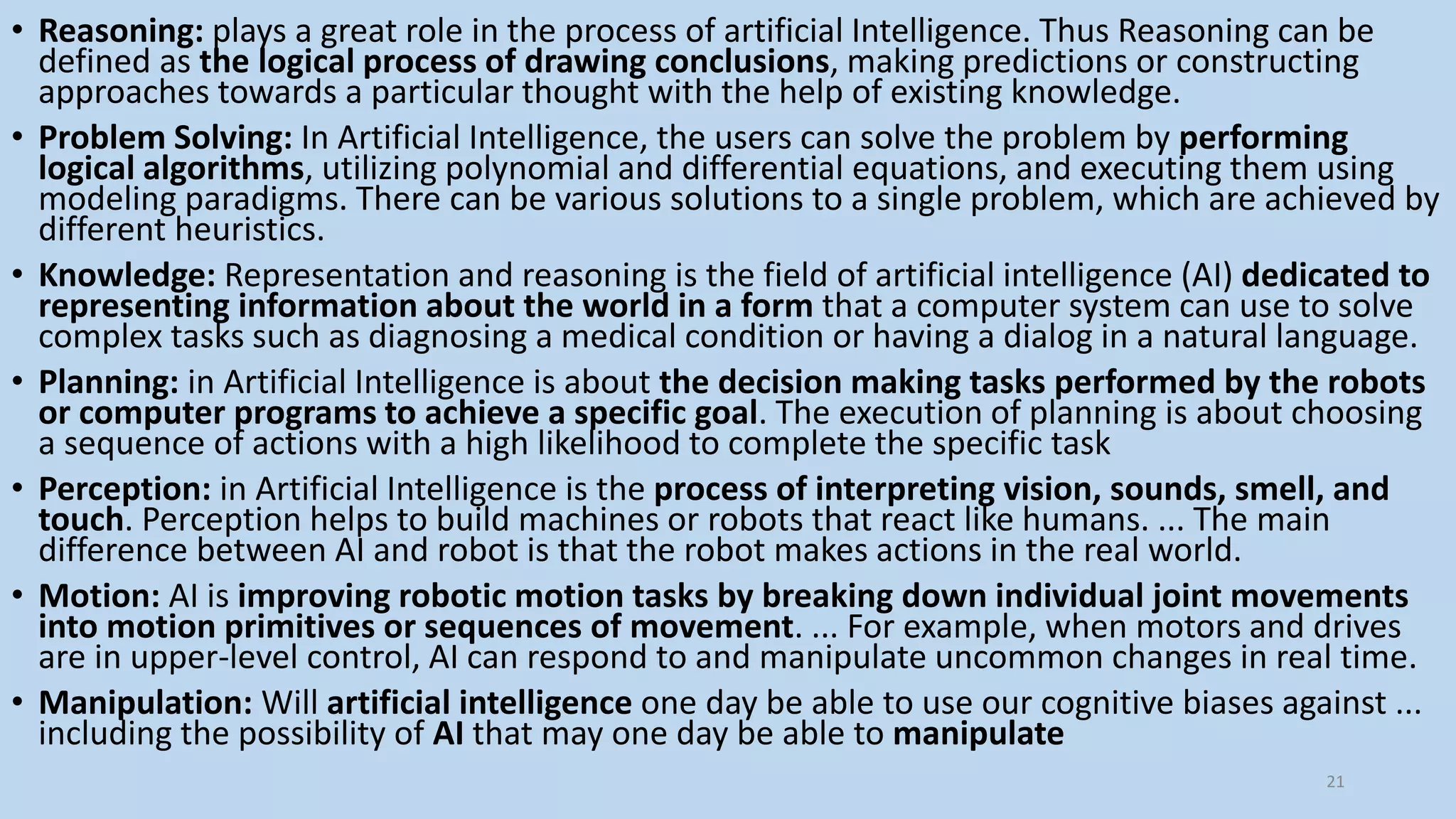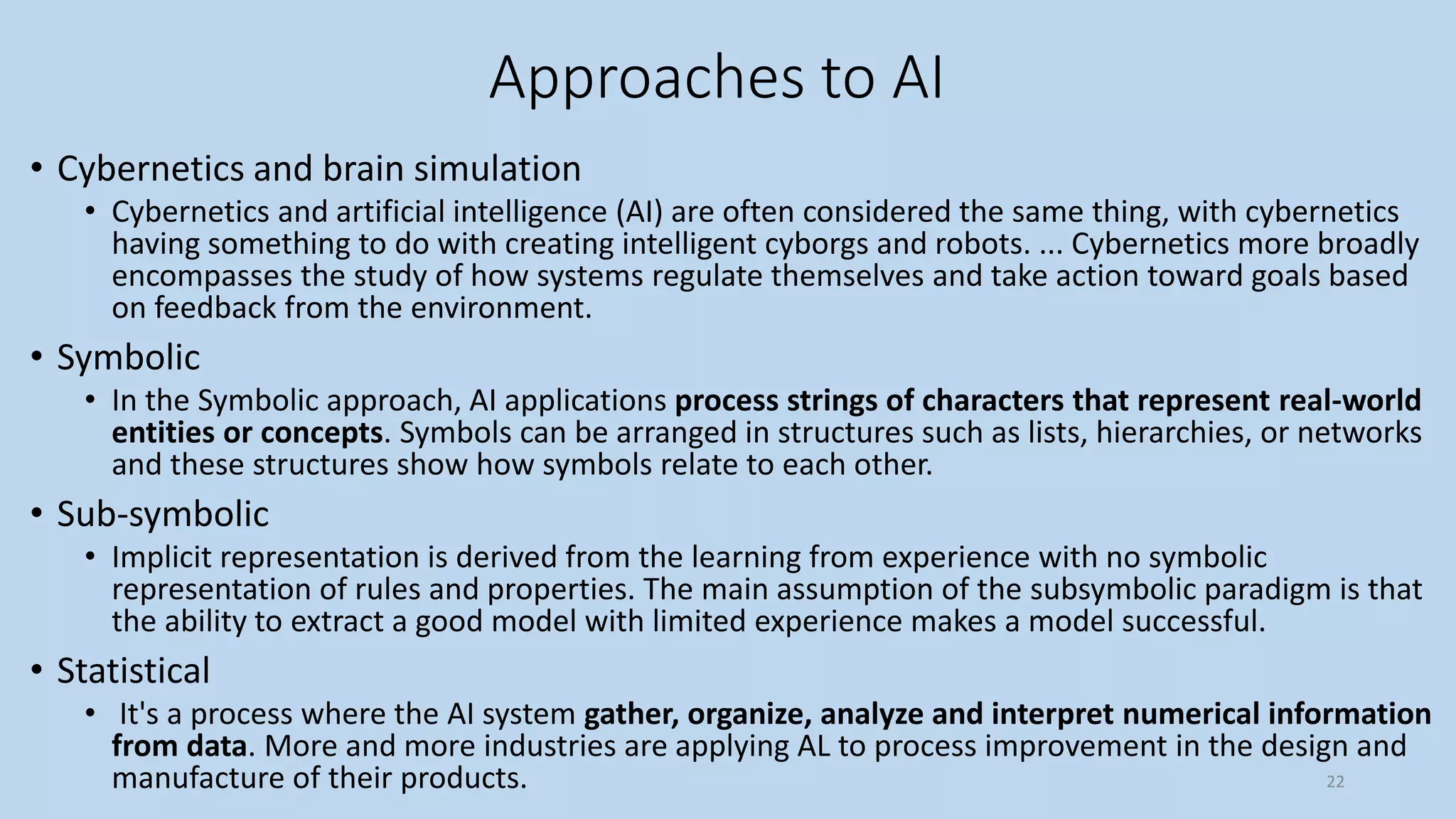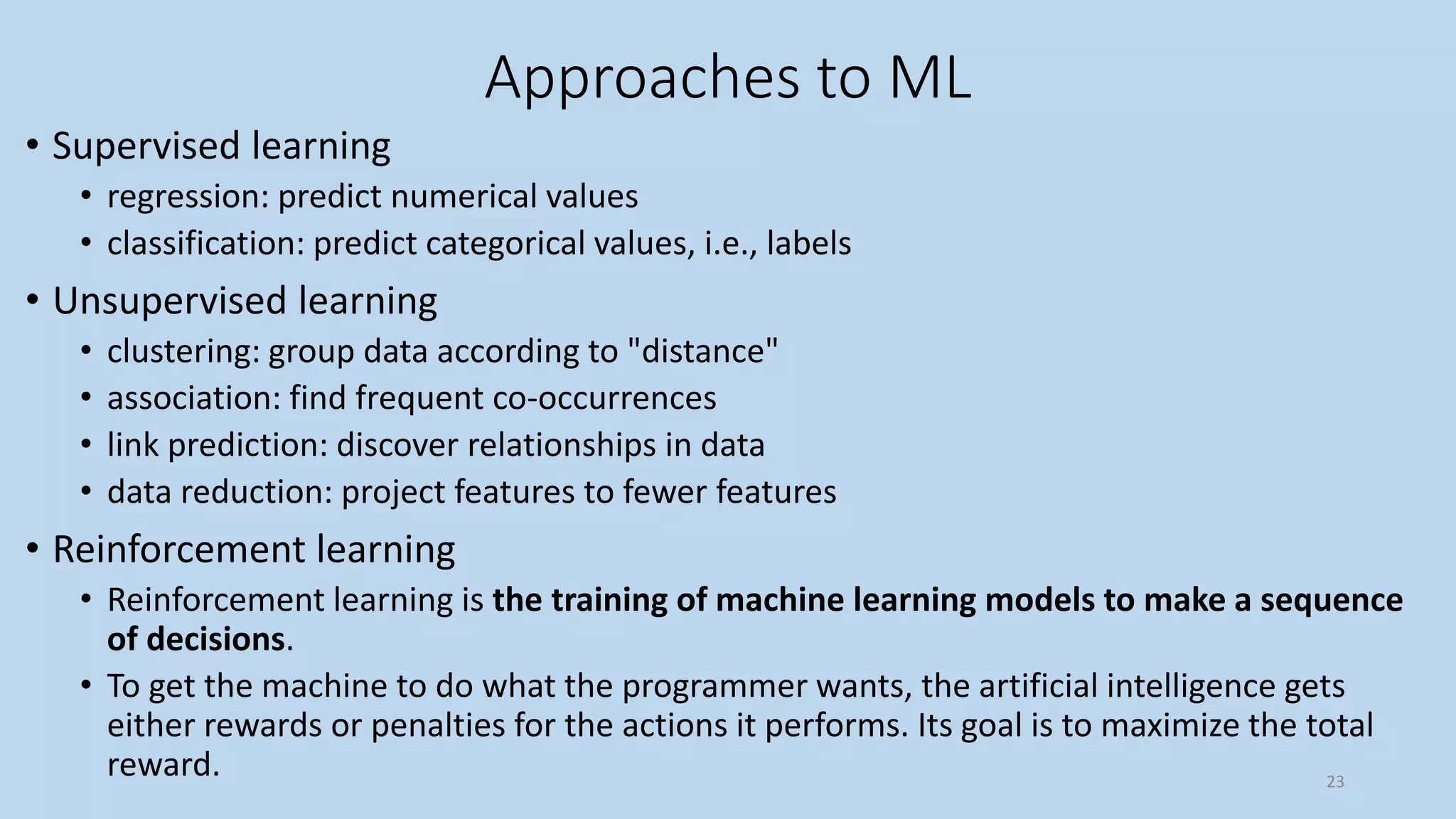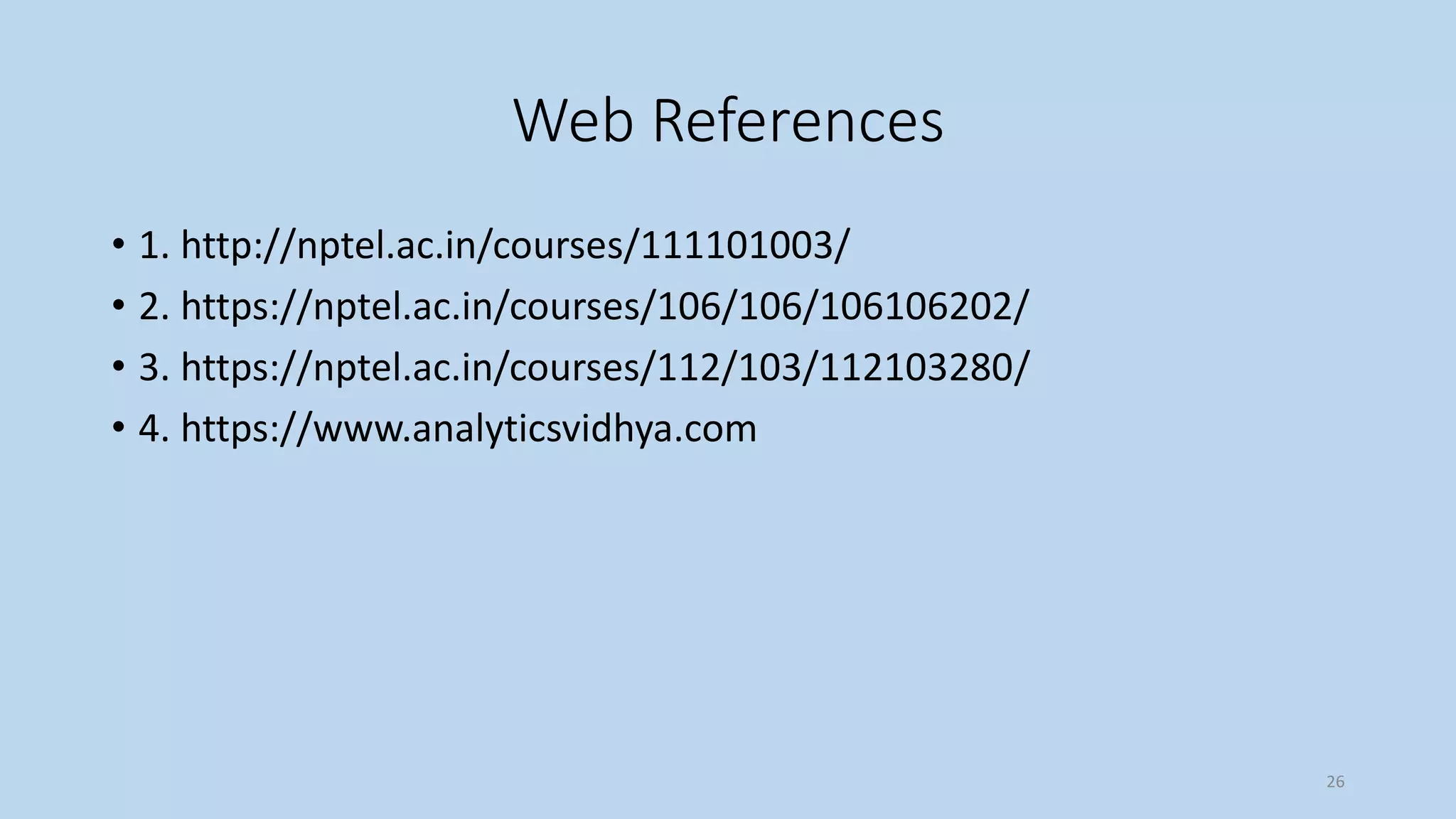Artificial intelligence and machine learning are discussed. AI is defined as making computers intelligent like humans through understanding, reasoning, planning, communication and perception. Machine learning is a subset of AI that allows machines to learn from experience without being explicitly programmed. The document provides background on AI and ML, including definitions, history, and discussions of intelligence and applications.
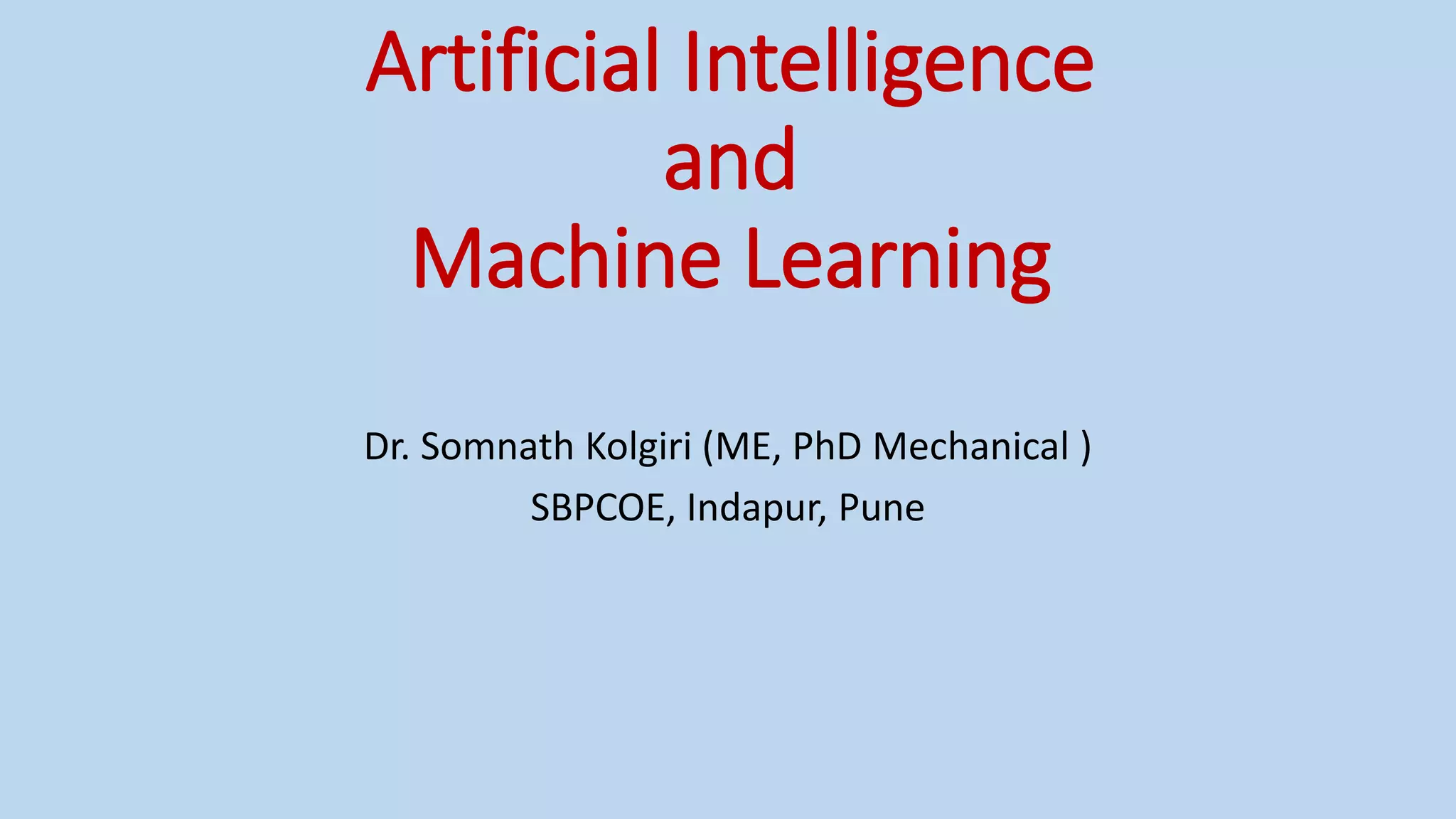
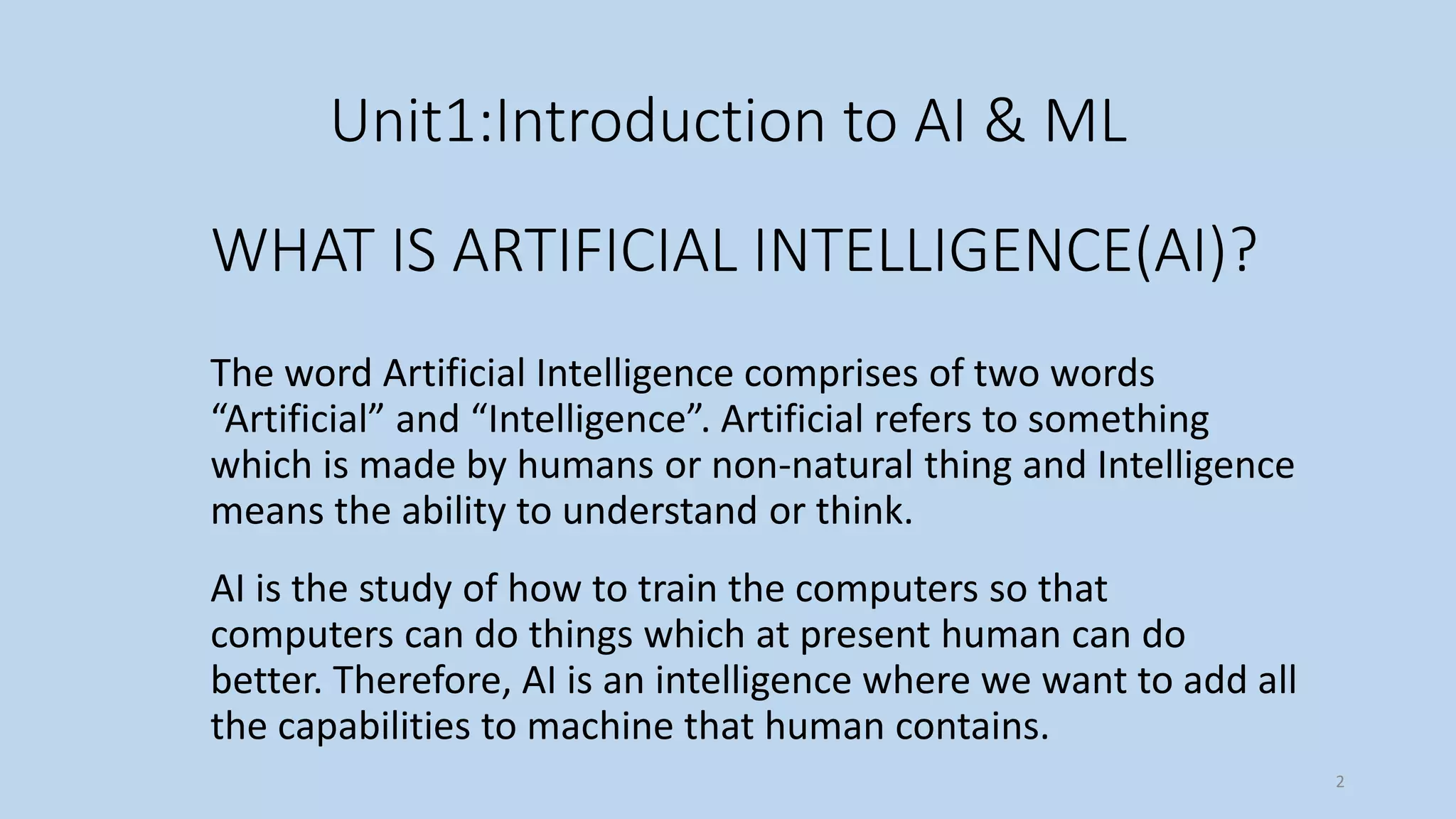
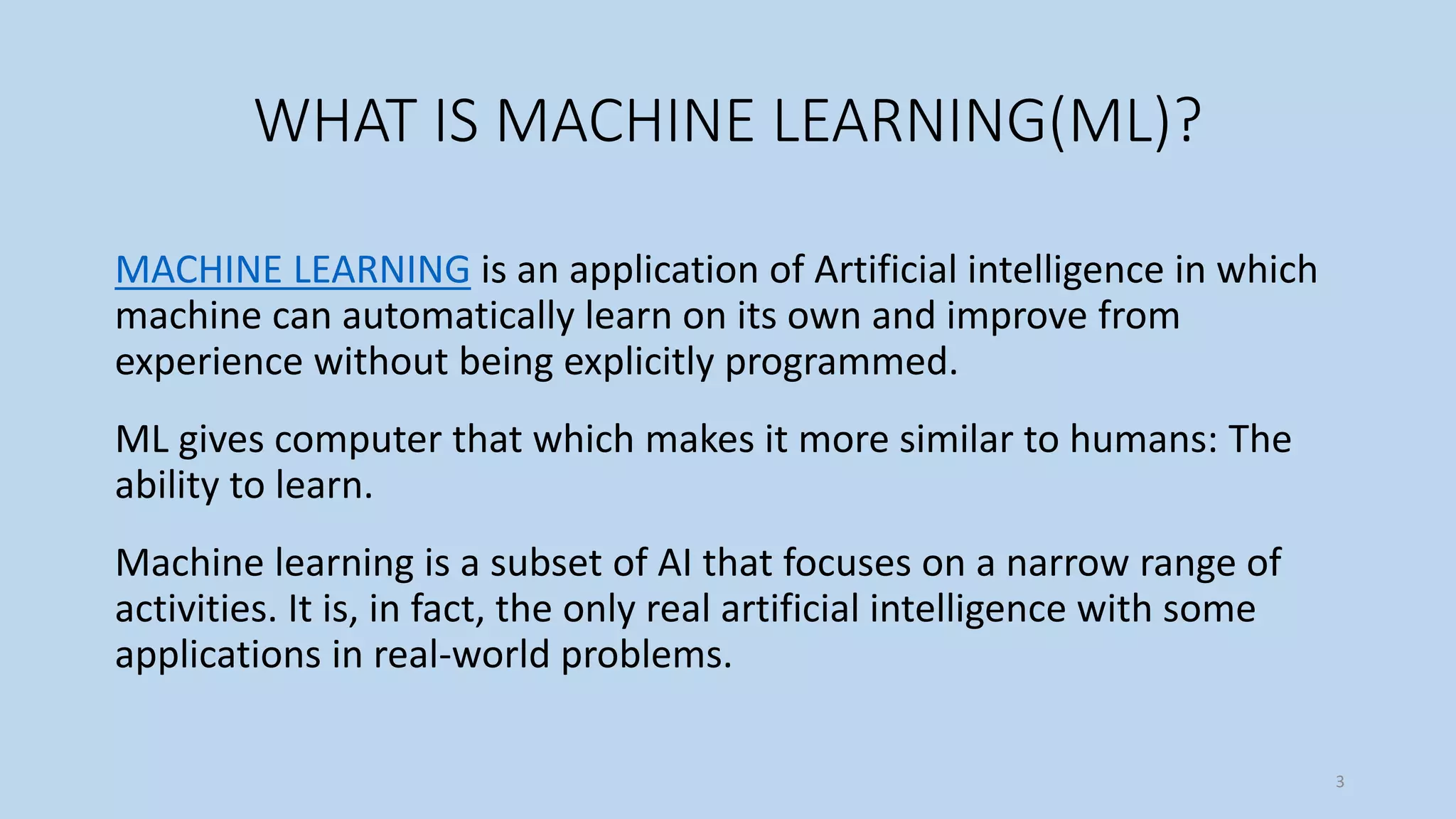
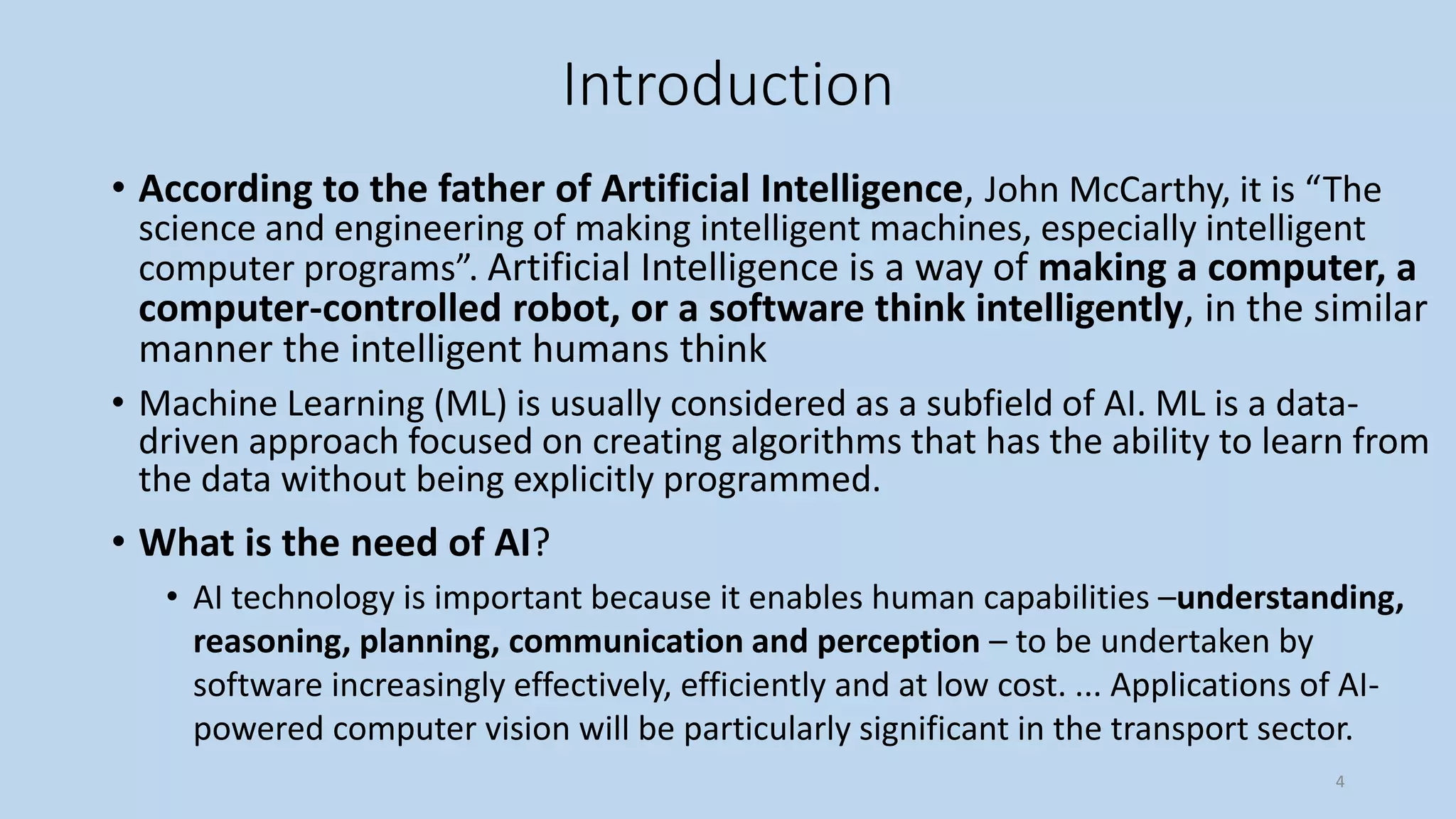
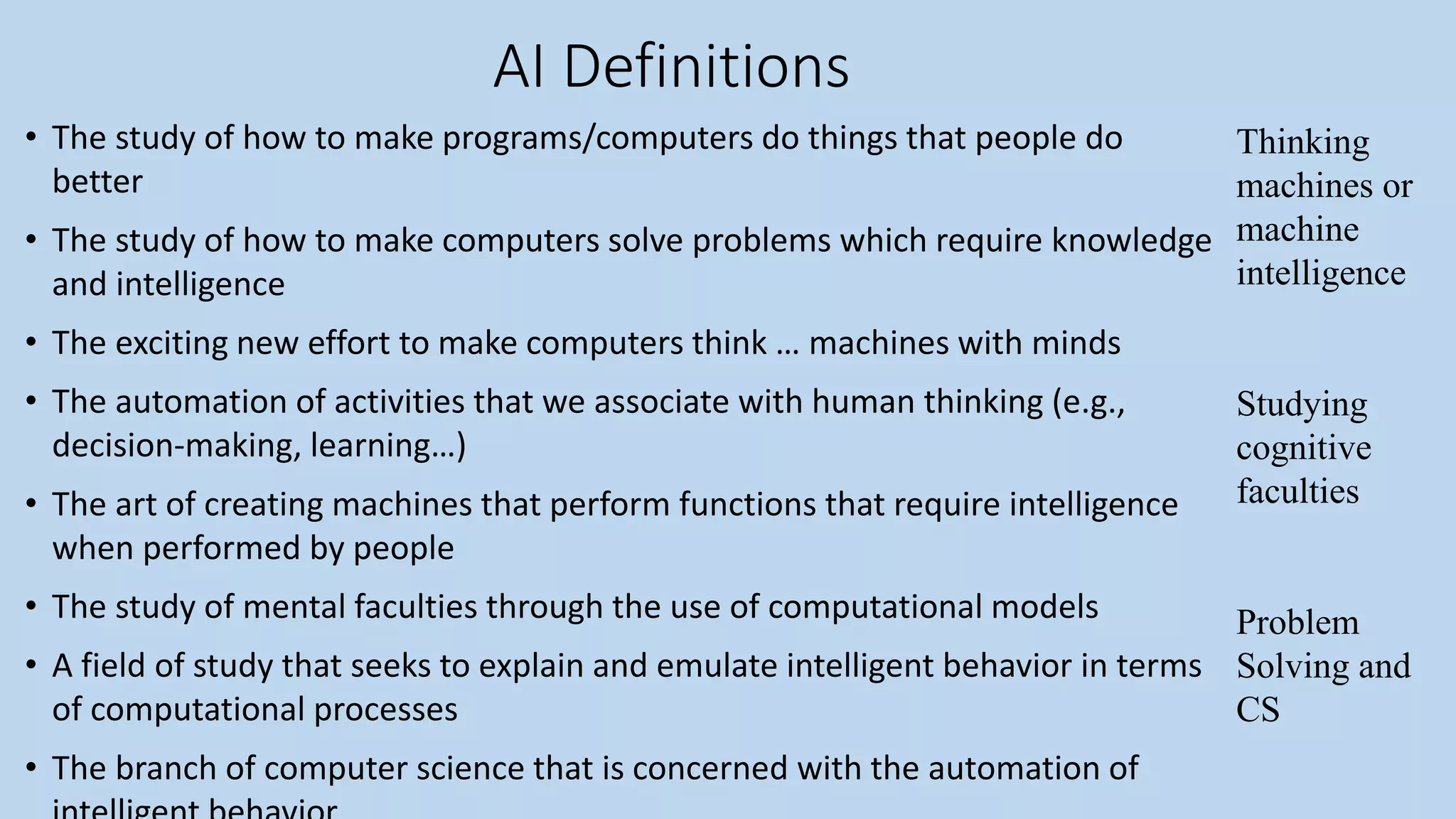
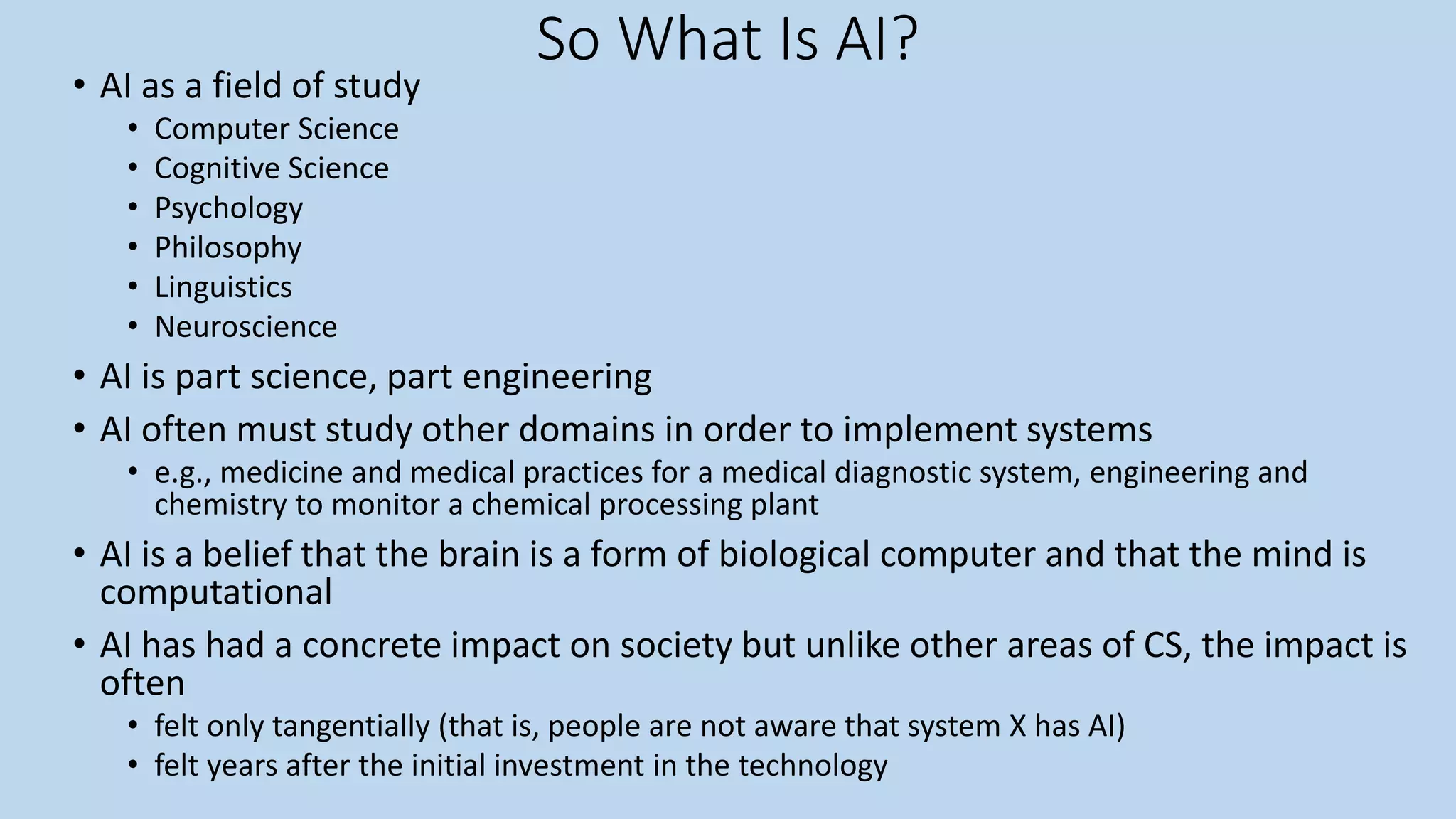

![History of AI
• [1943-1955] The gestation of artificial intelligence ,McCulloch & Pitts: model of artificial neurons
• Two undergraduate students at Harvard, Marvin Minsky and Dean Edmonds, built the first neural
network computer in 1950.
• Alan Turing gave lectures on the topic as early as 1947 at the London Mathematical Society and
articulated a persuasive agenda in his 1950 article "Computing Machinery and Intelligence.
• [1956] The birth of artificial intelligence John McCarthy moved to Dartmouth College. He
convinced Minsky, Claude Shannon, and Nathaniel Rochester to help him bring together
U.S. researchers interested in automata theory, neural nets, and the study of intelligence.
• [1952-1969] Early enthusiasm, great expectations of General Problem Solver (GPS). This
program was designed from the start to imitate human problem-solving protocols. Within
the limited class of puzzles it could handle, it turned out that the order in which the
program considered sub goals and possible actions was similar to that in which humans
approached the same problems.
8](https://image.slidesharecdn.com/aimlunit1-220329093506/75/AIML_Unit1-pptx-8-2048.jpg)
![History of AI
• [1966-1973] A dose of reality ○ Simon stated that within 10 years a computer would be
chess champion, and a significant mathematical theorem would be proved by machine.
• [1974-1980] First AI winter ○ (1966), a report by an advisory committee found that "there
has been no machine translation of general scientific text, and none is in immediate
prospect." All U.S. government funding for academic translation projects was canceled.
• [1980-present] AI becomes an industry ○ The first successful commercial expert system,
RI, began operation at the Digital Equipment Corporation (McDermott, 1982).
• [2001-present] The availability of very large data sets ○ Throughout the 60-year history of
computer science, the emphasis has been on the algorithm as the main subject of study.
But some recent work in Al suggests that for many problems, it makes more sense to
worry about the data and be less picky about what algorithm to apply.
9](https://image.slidesharecdn.com/aimlunit1-220329093506/75/AIML_Unit1-pptx-9-2048.jpg)
